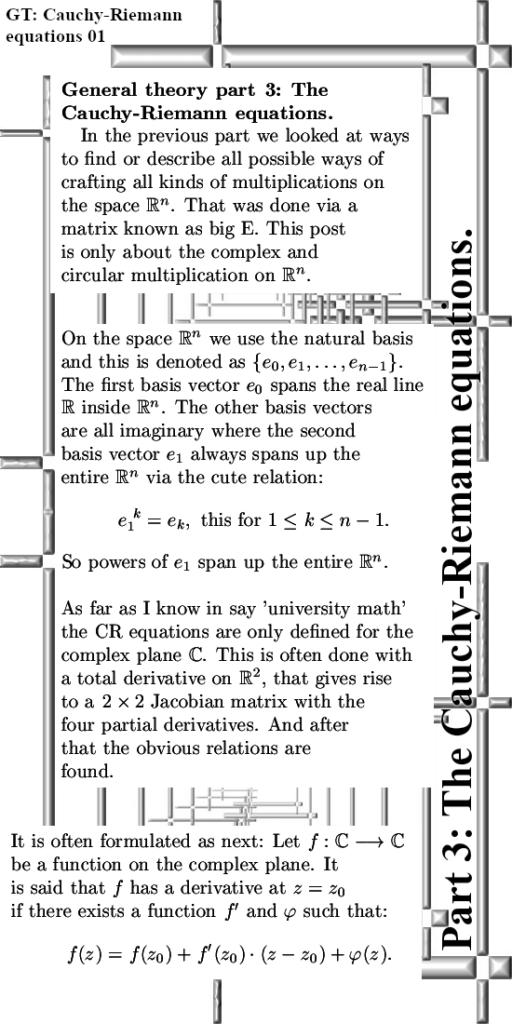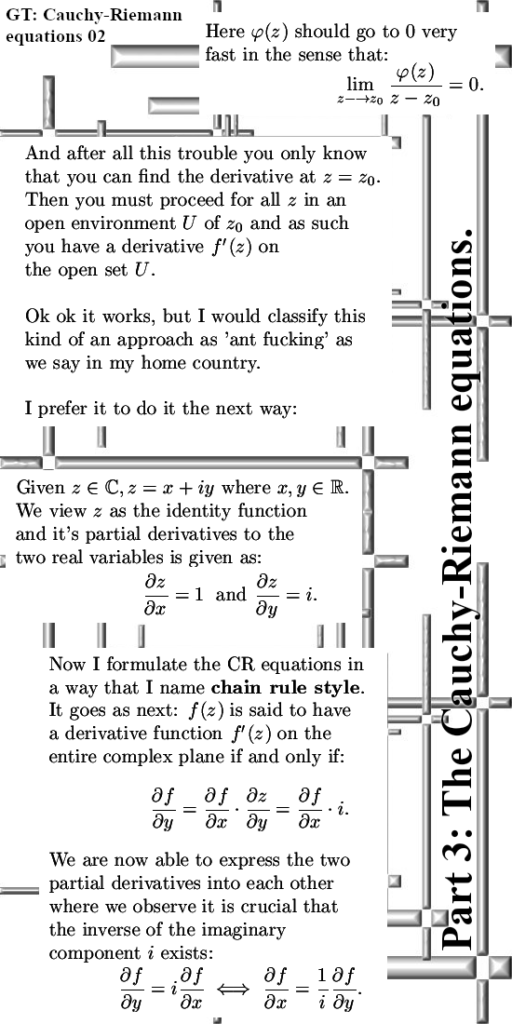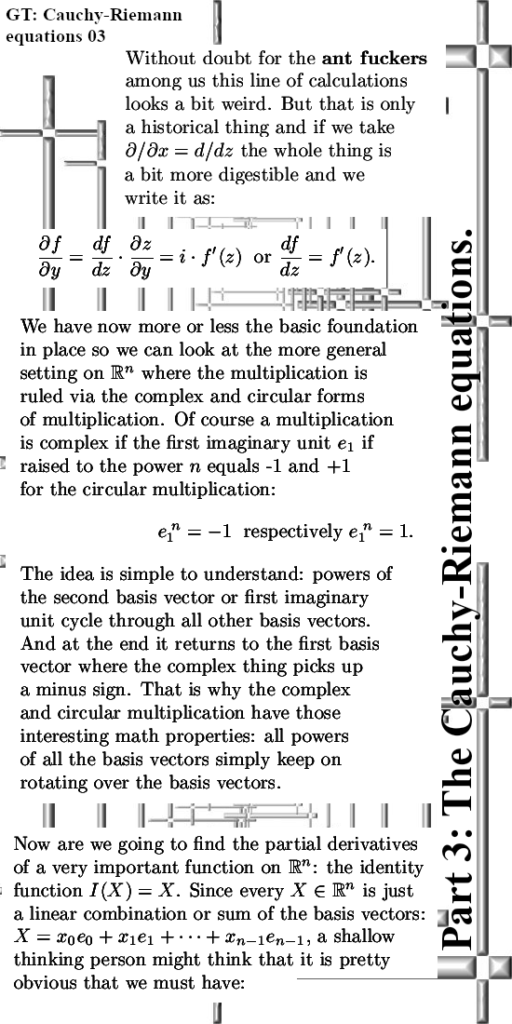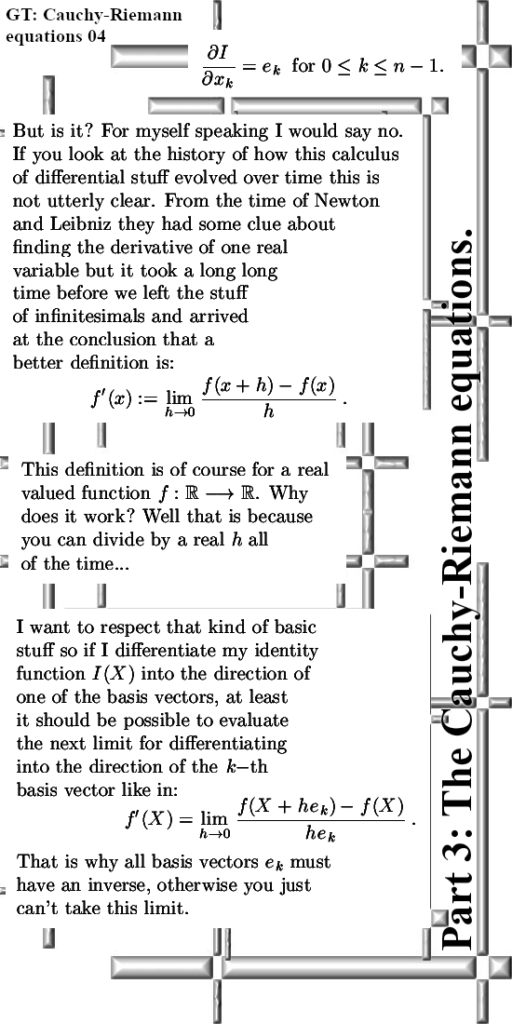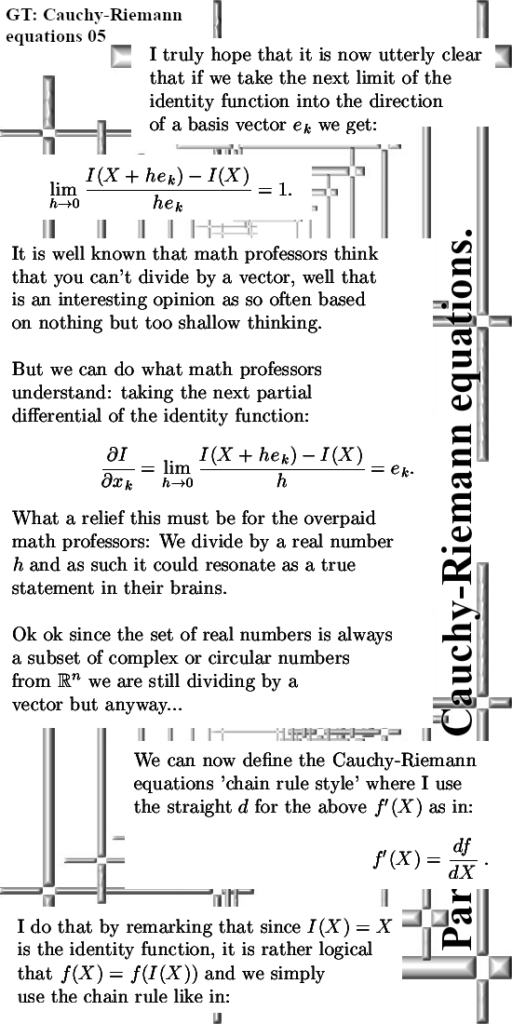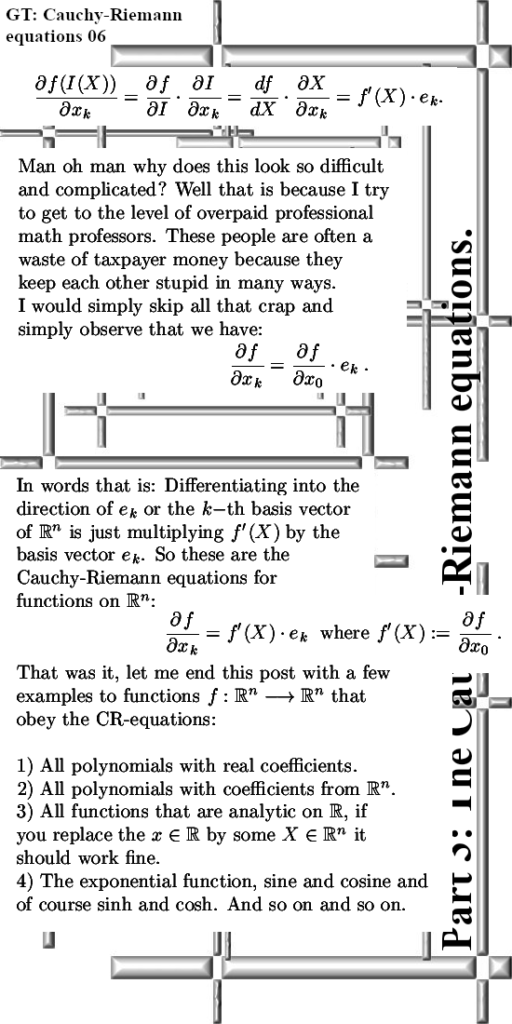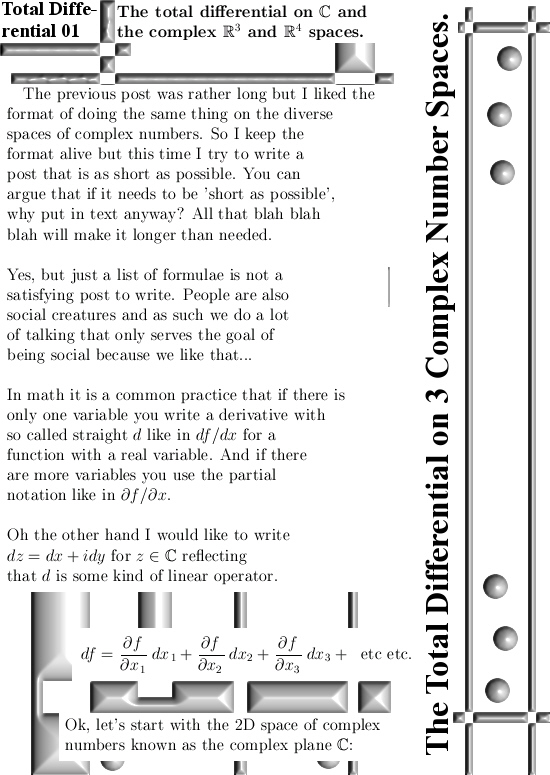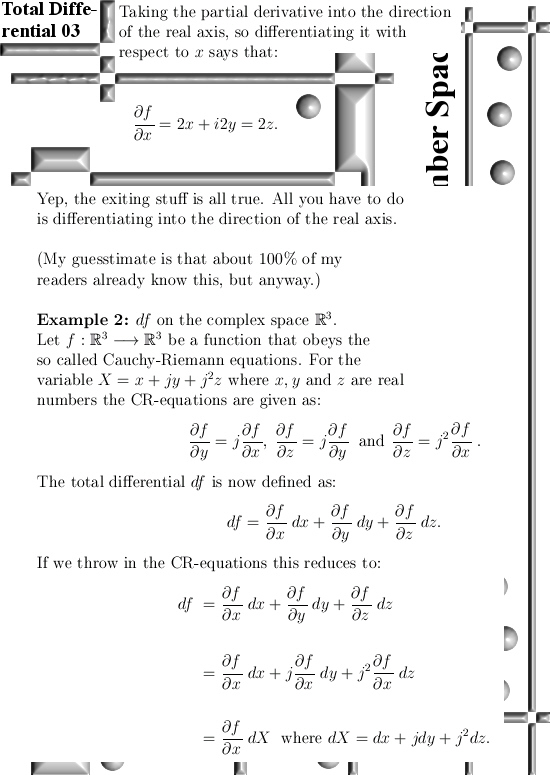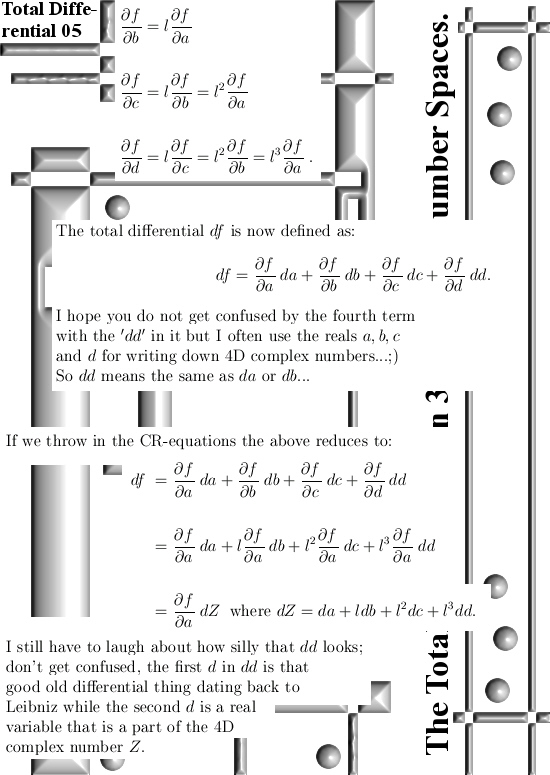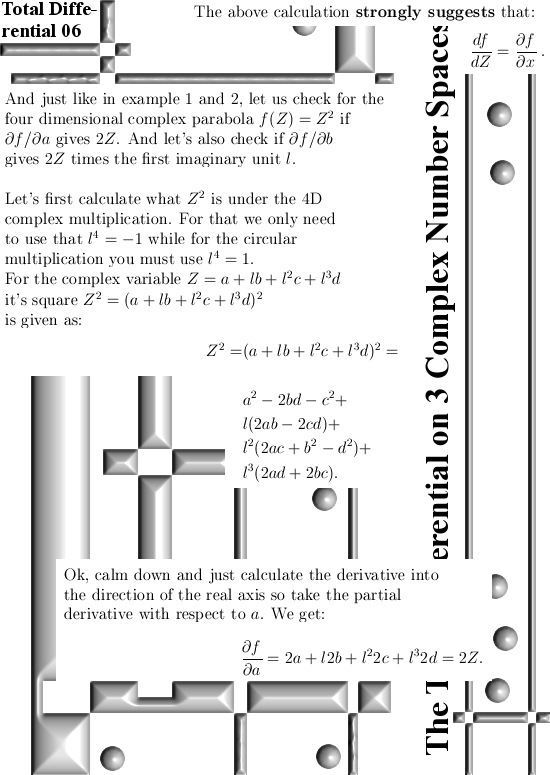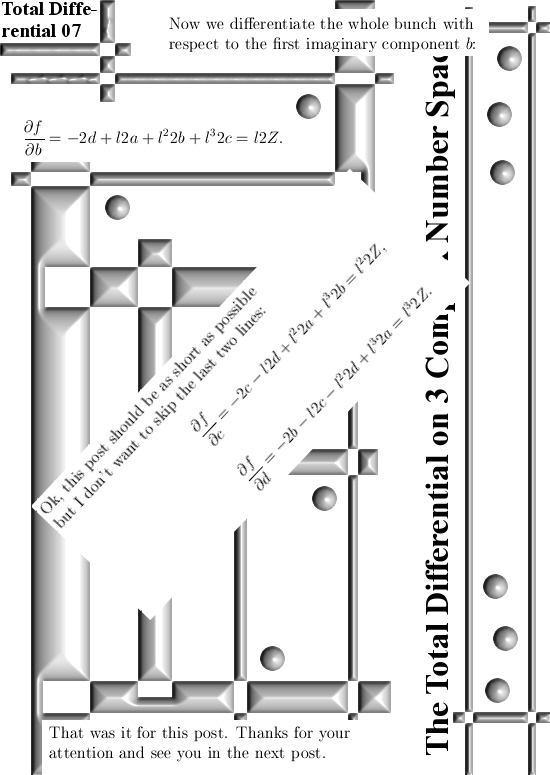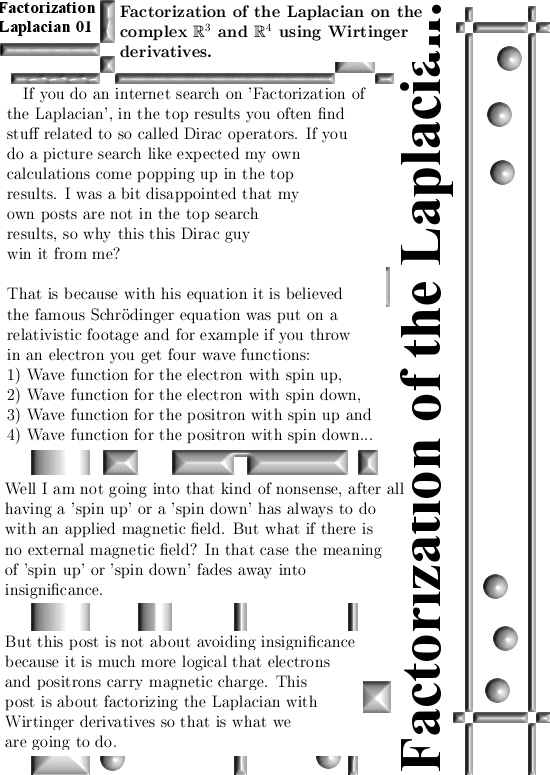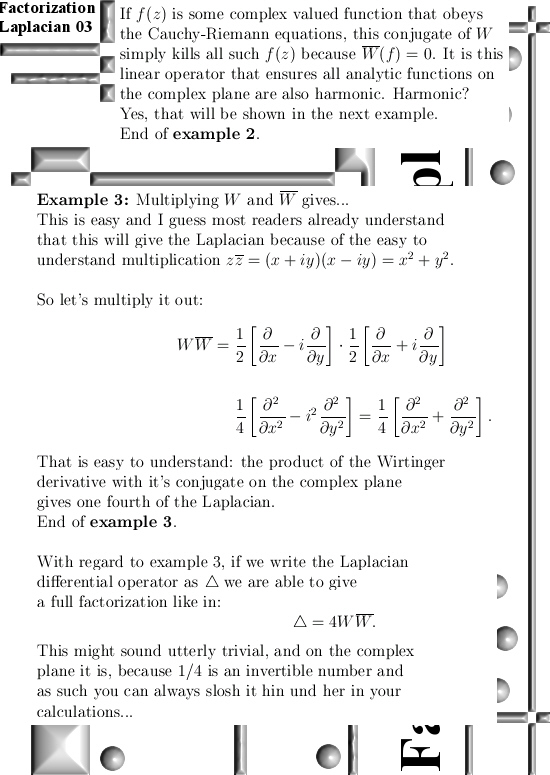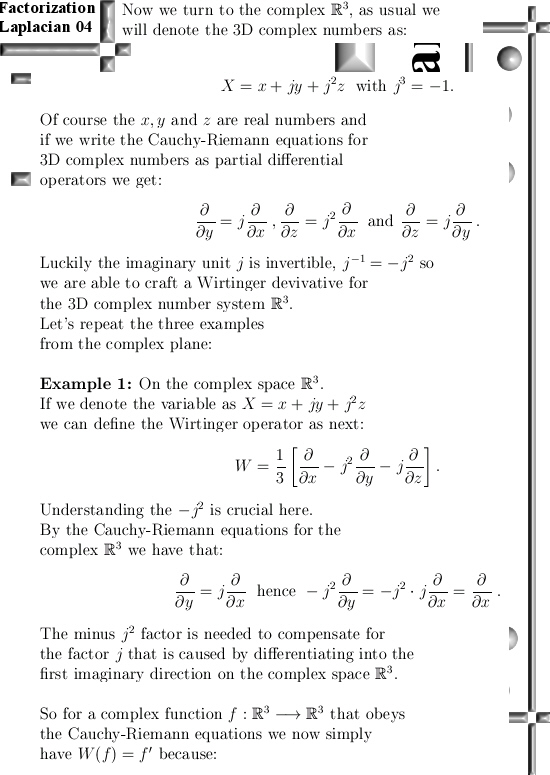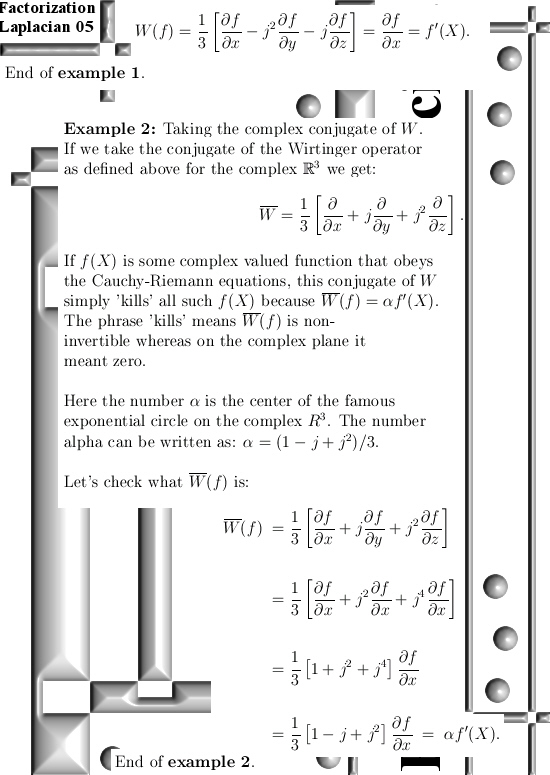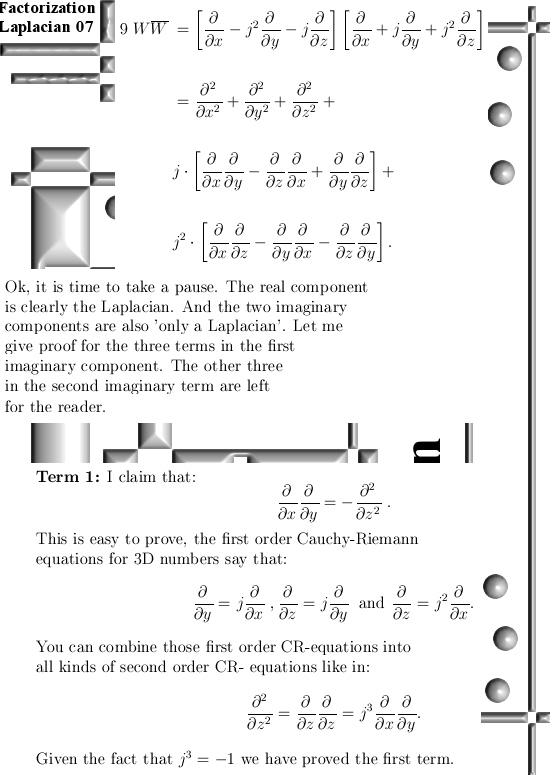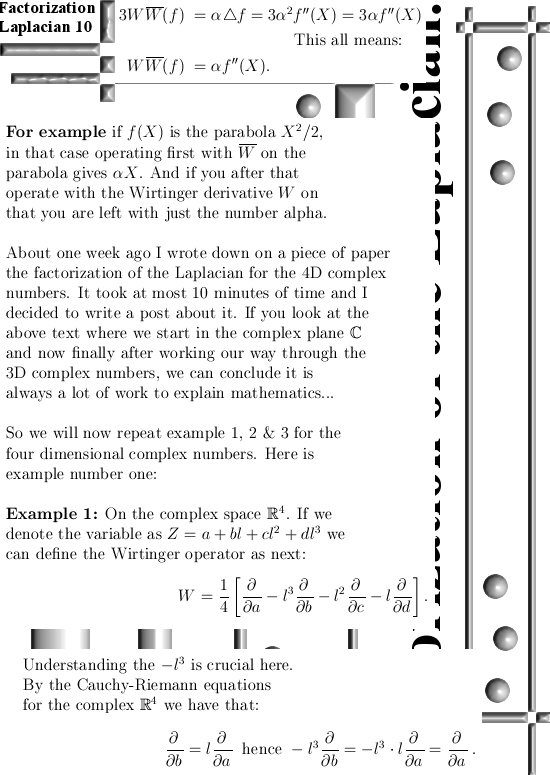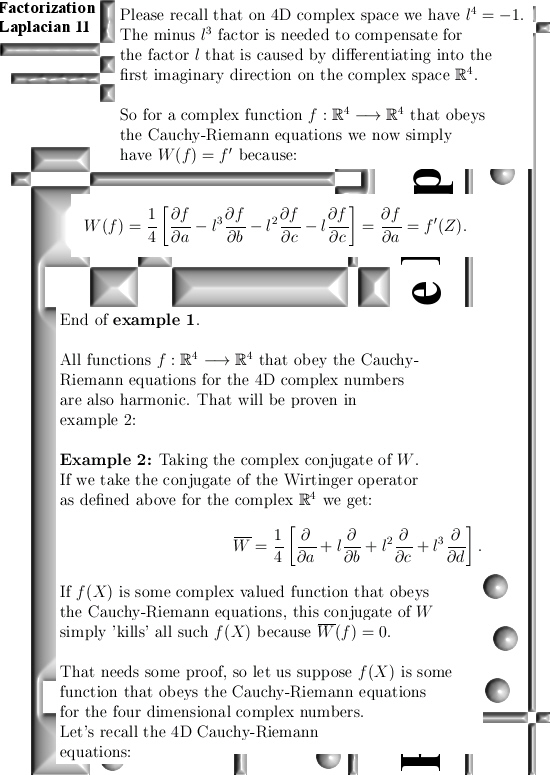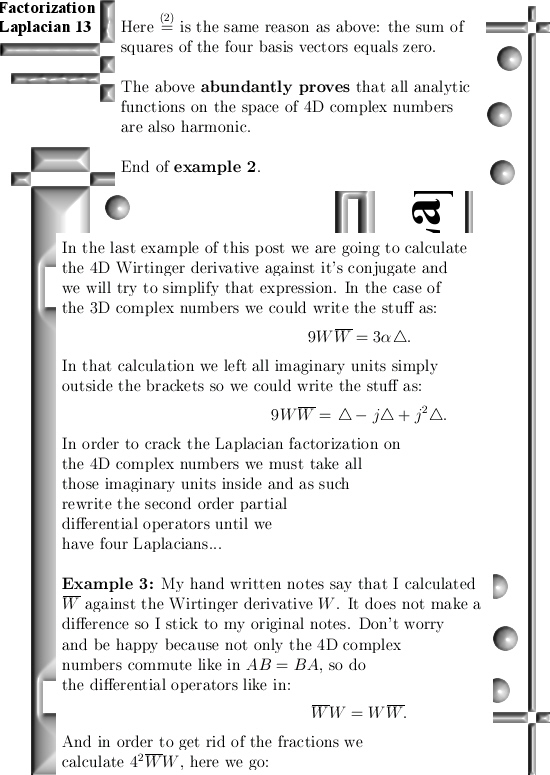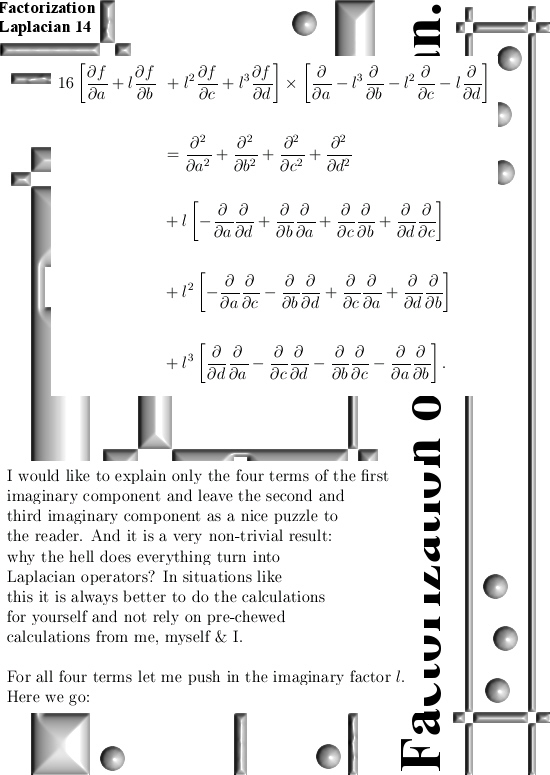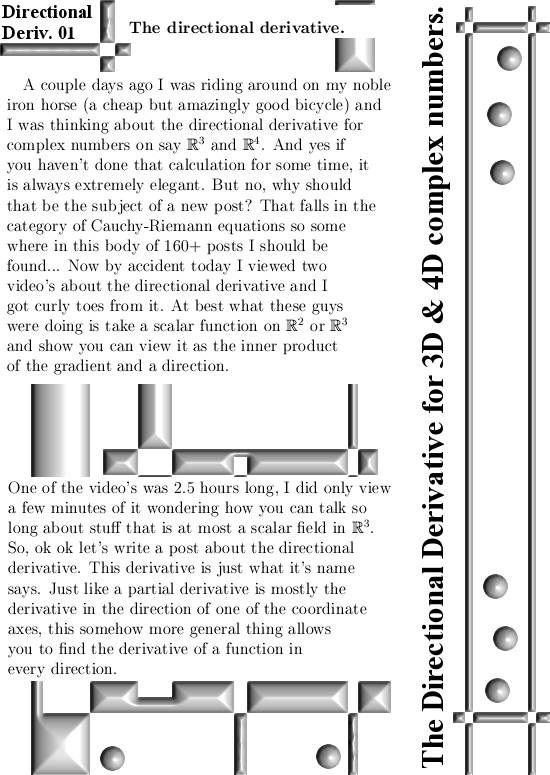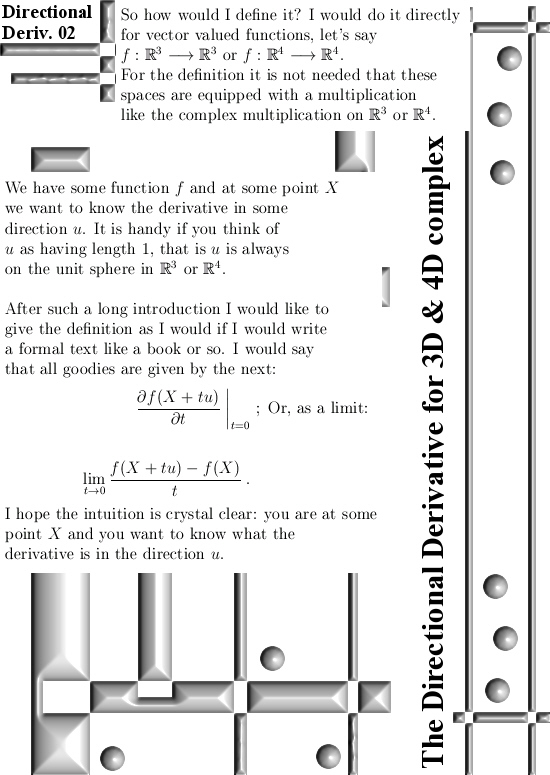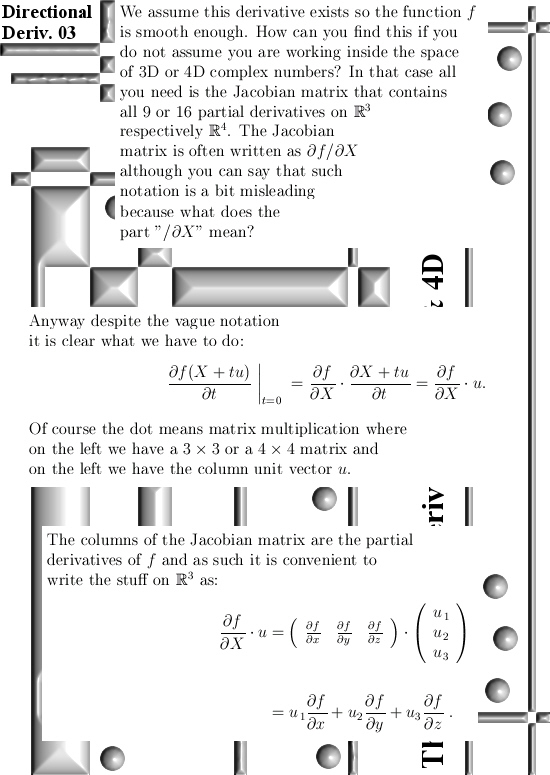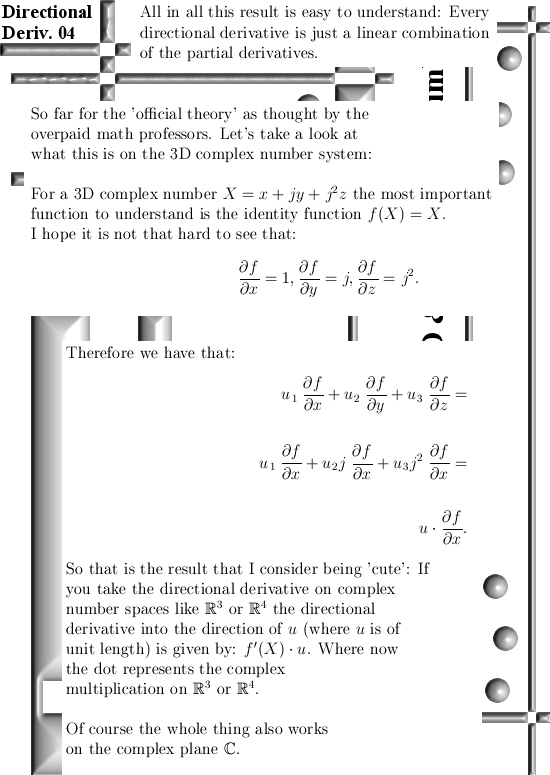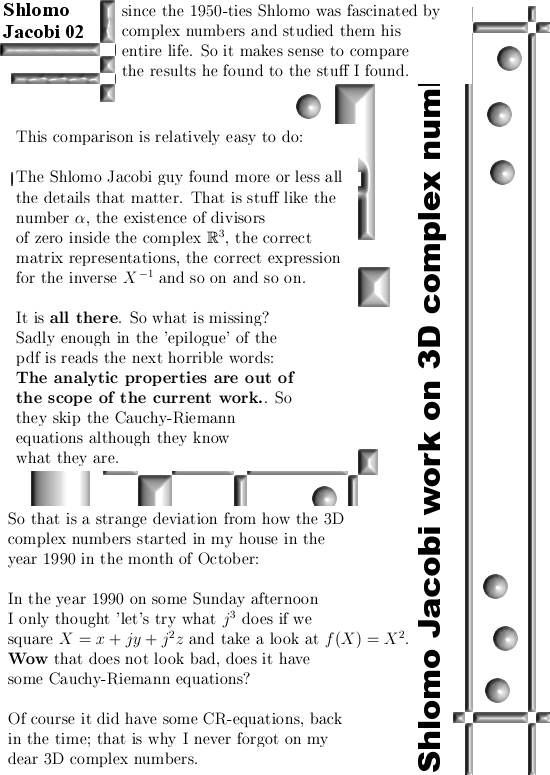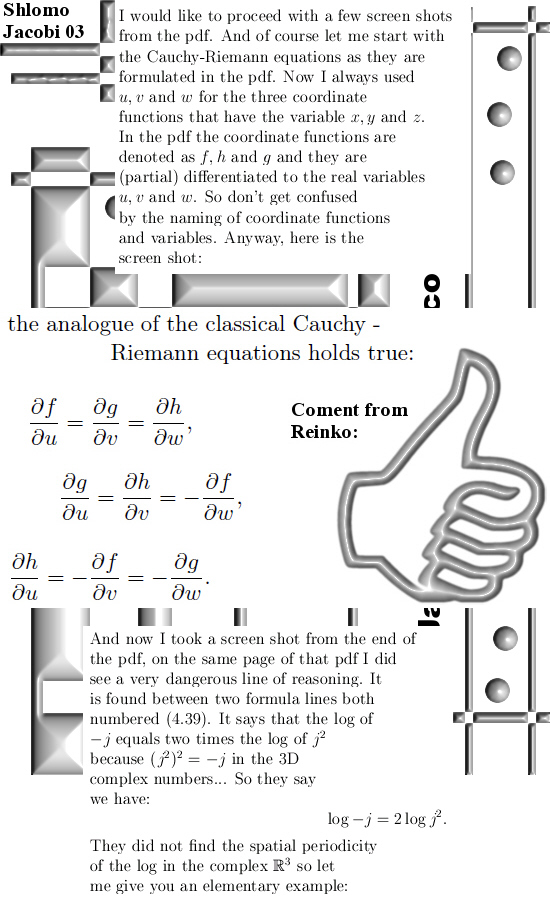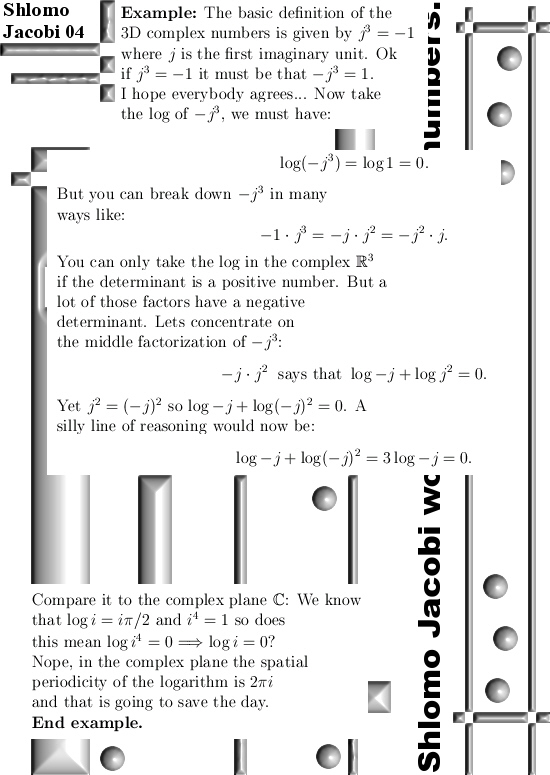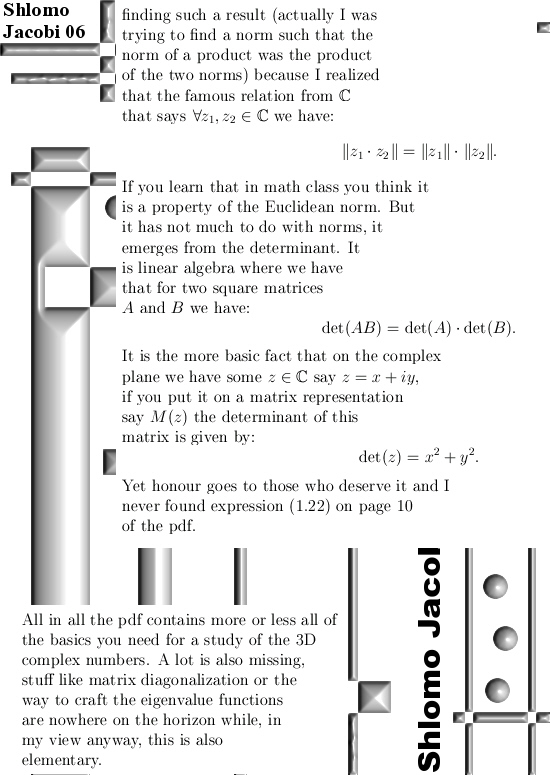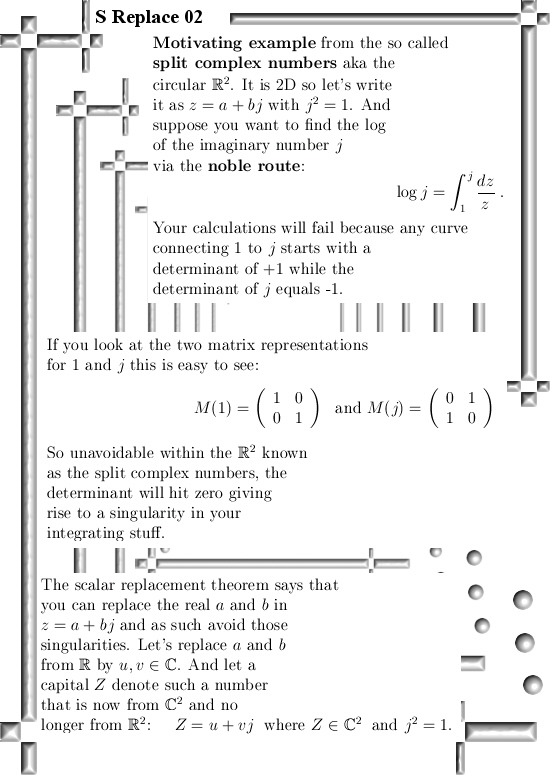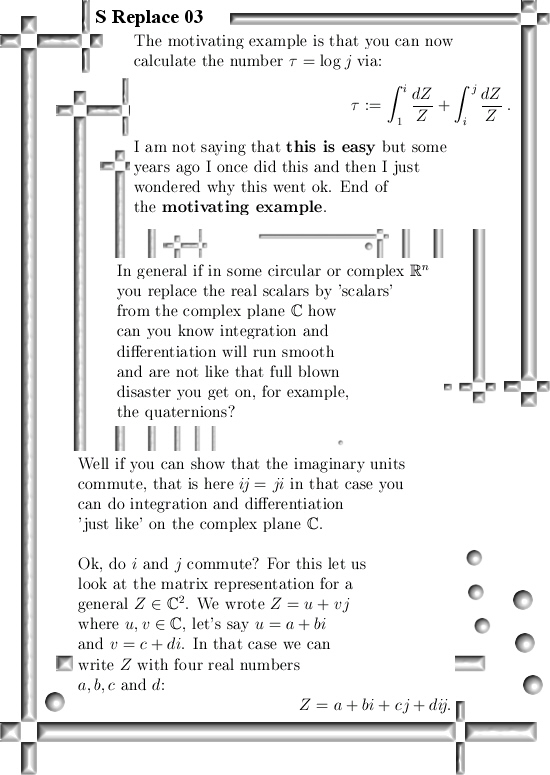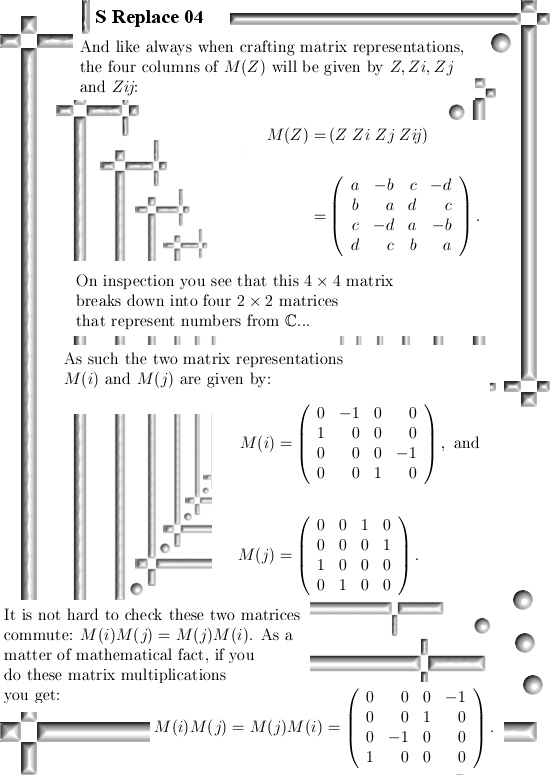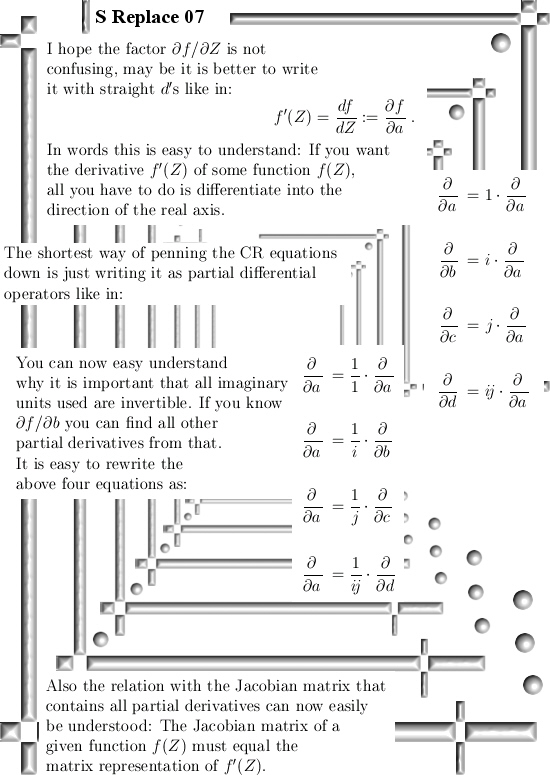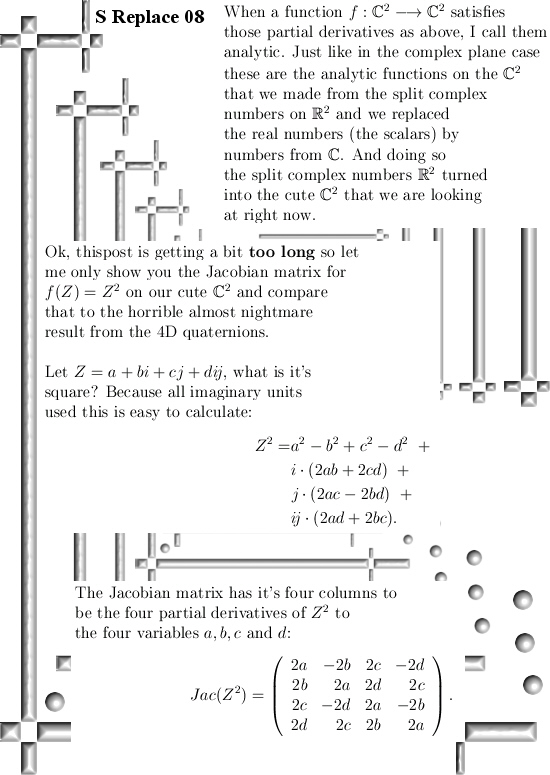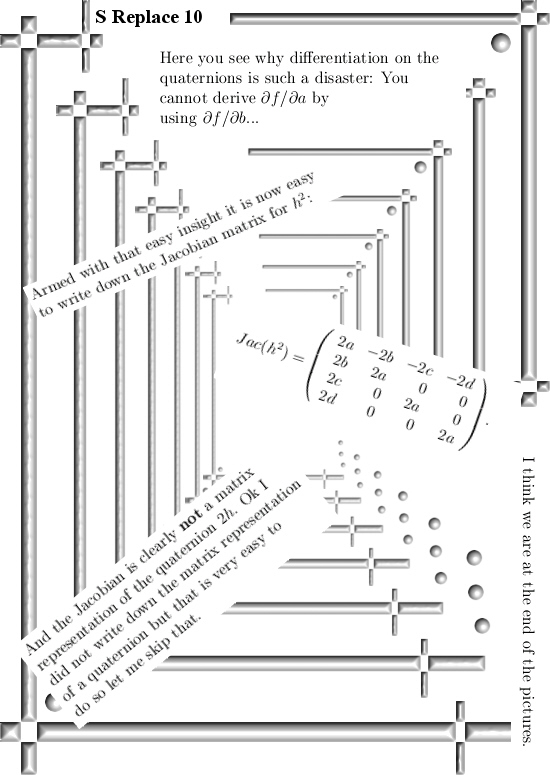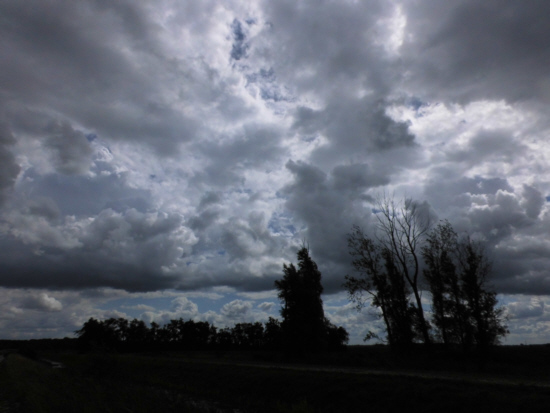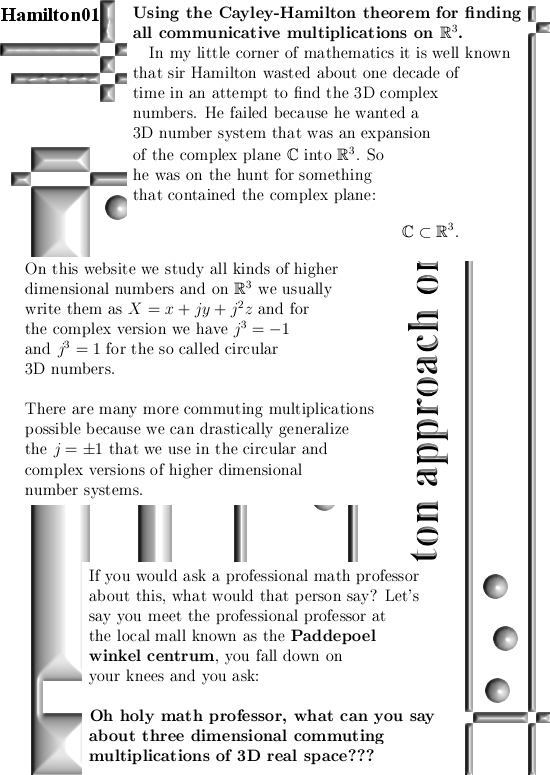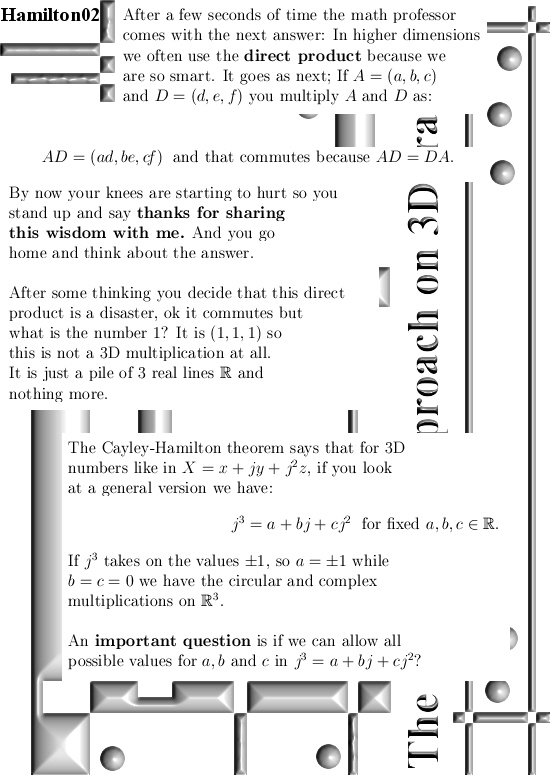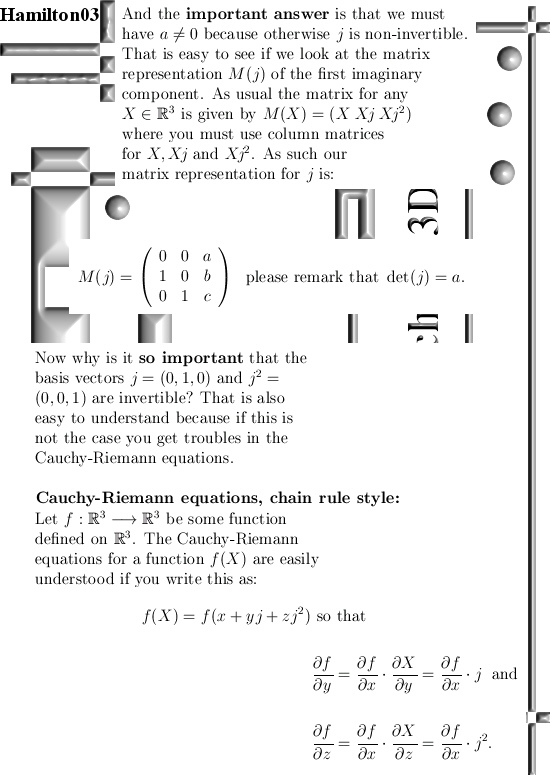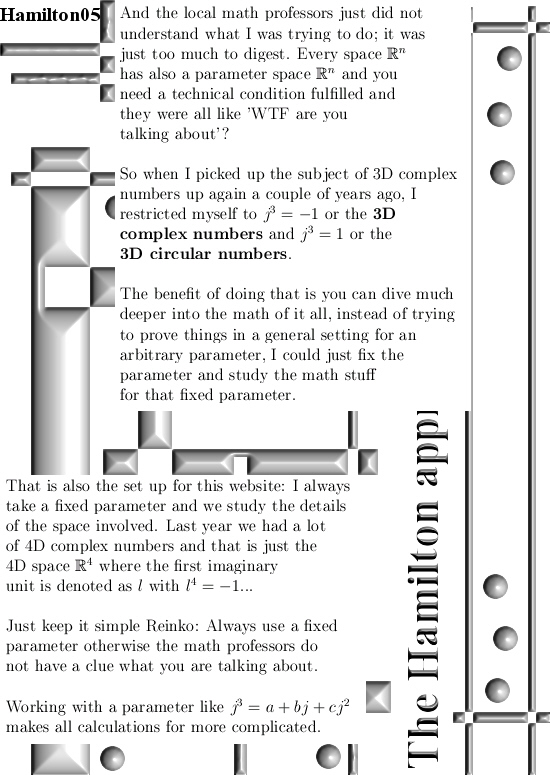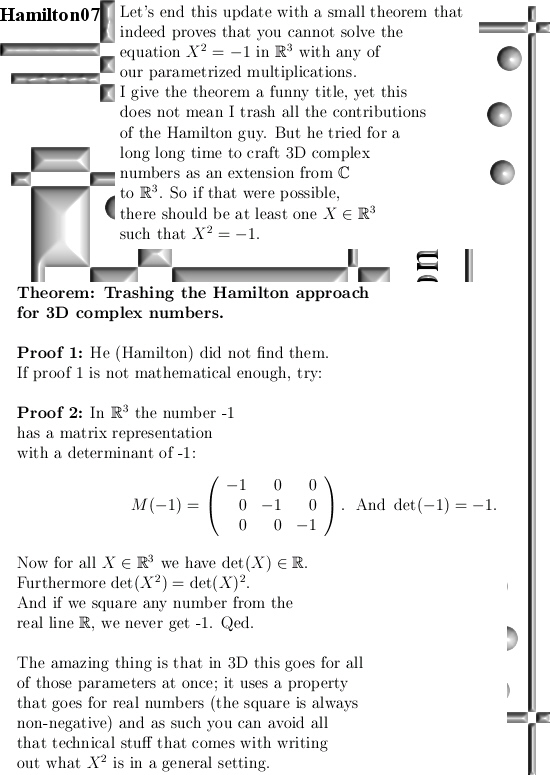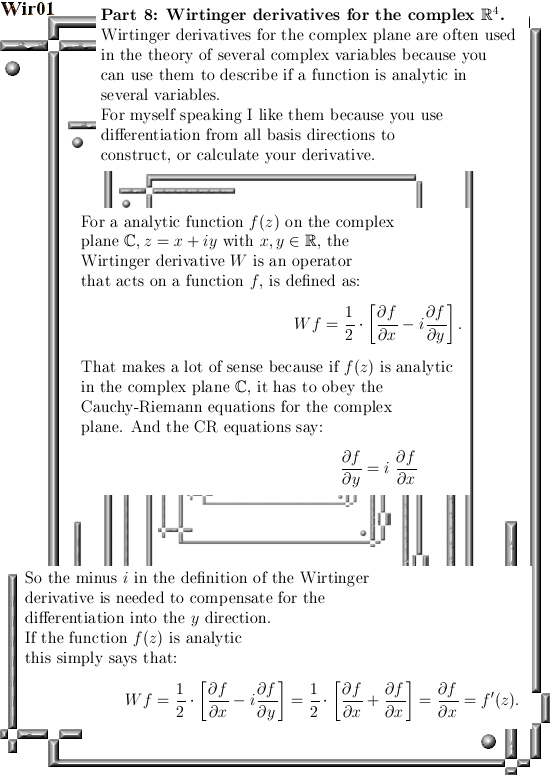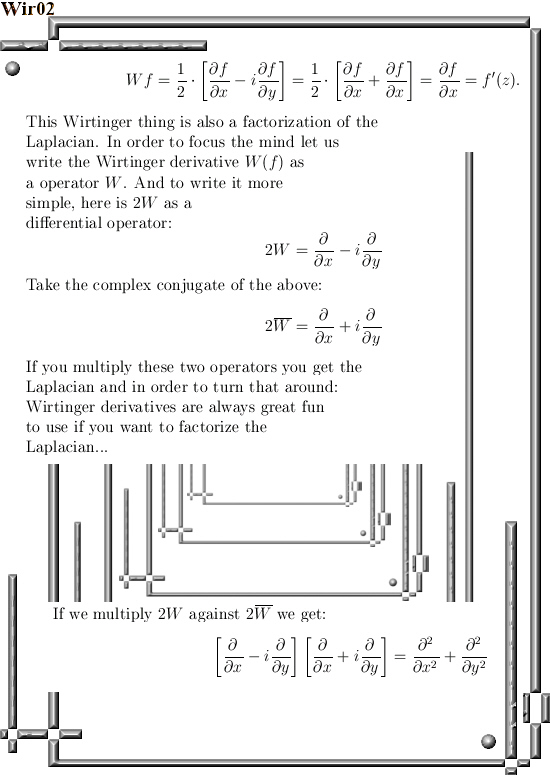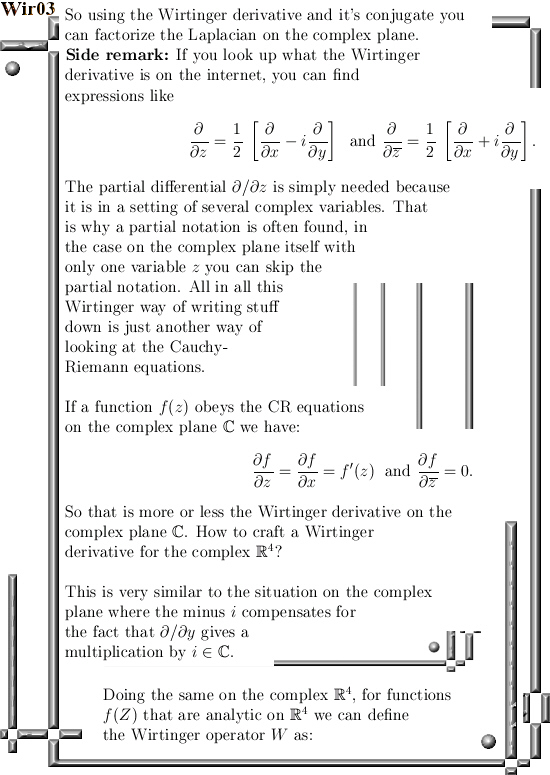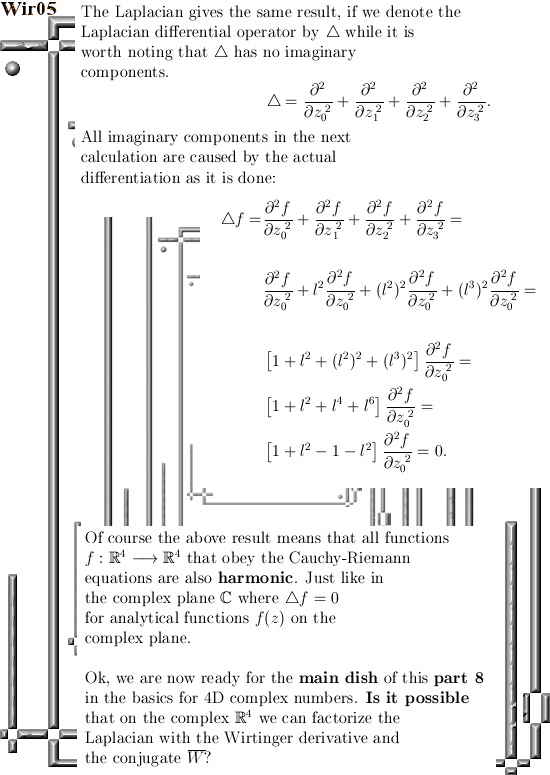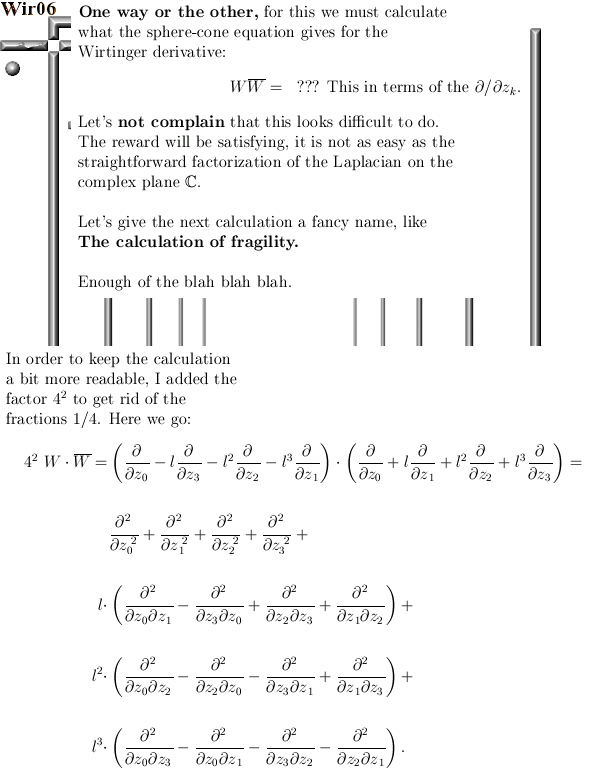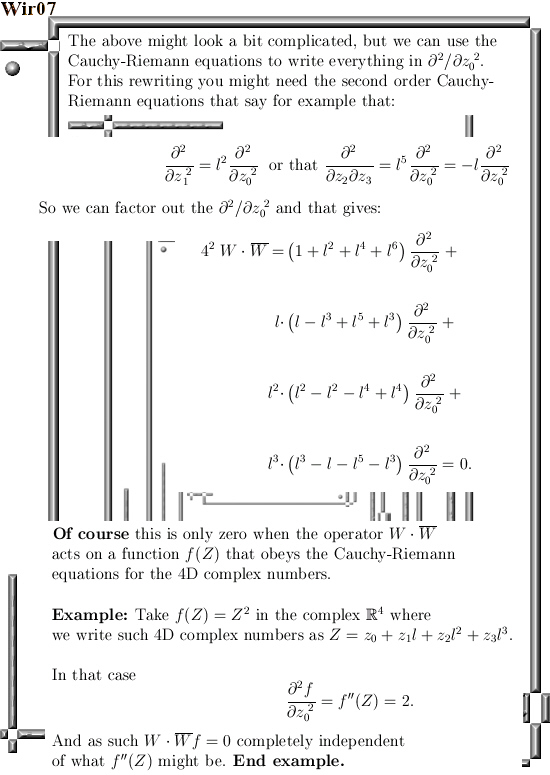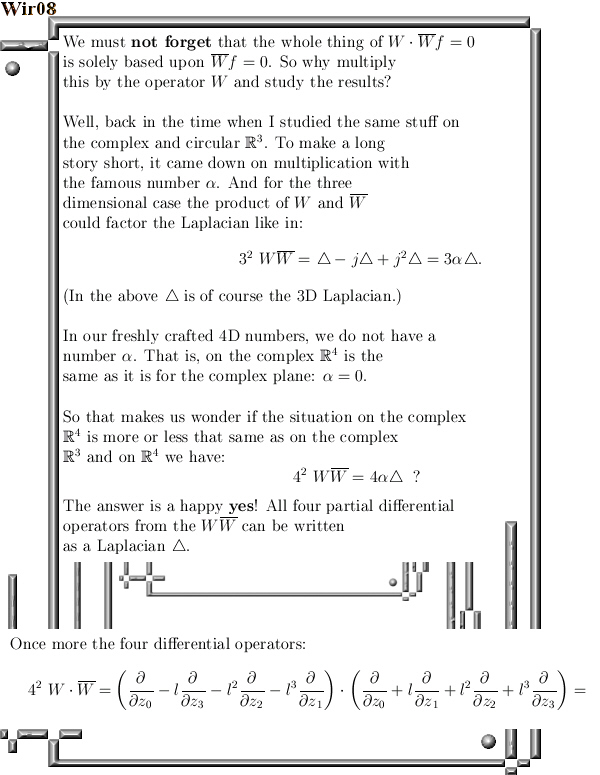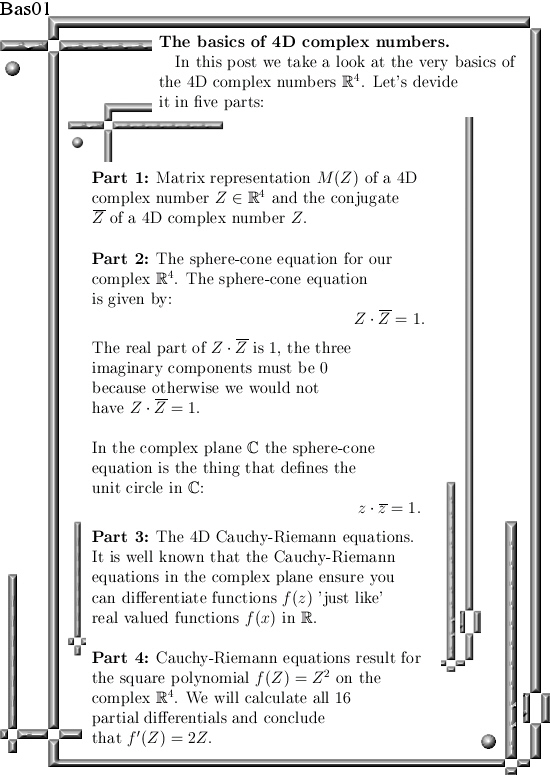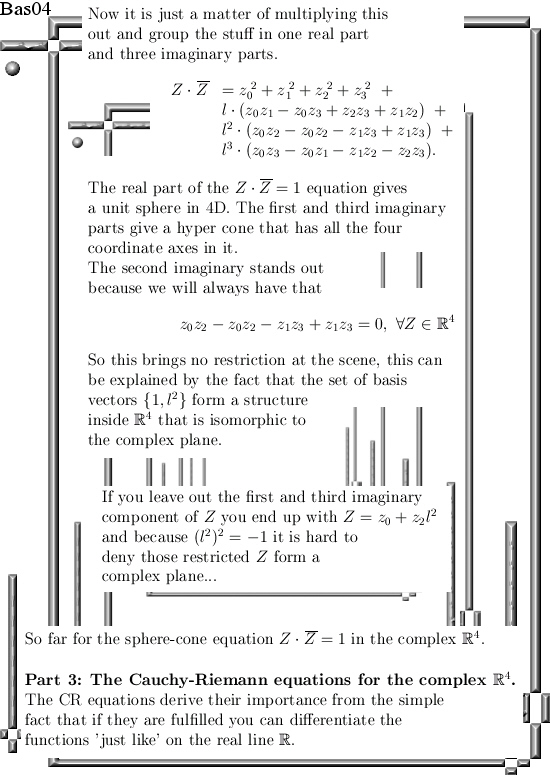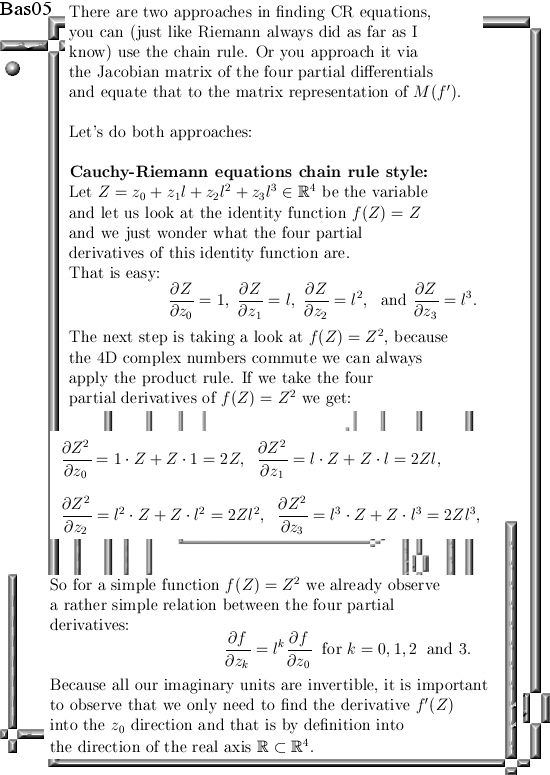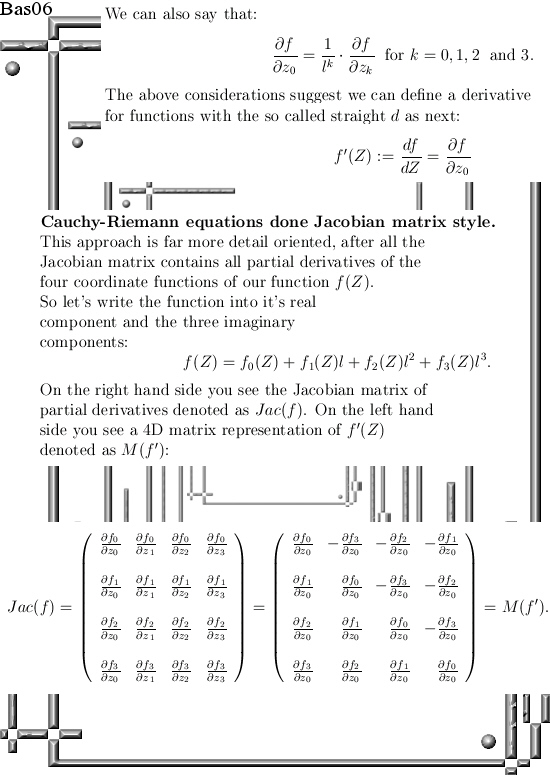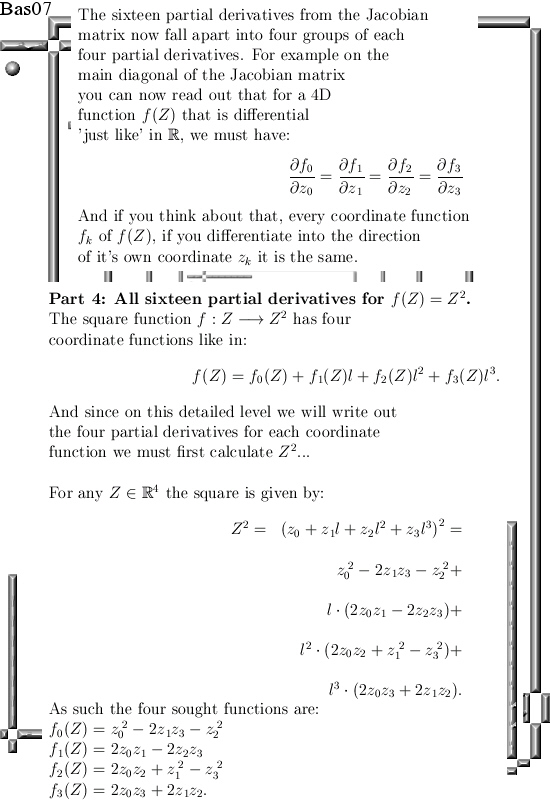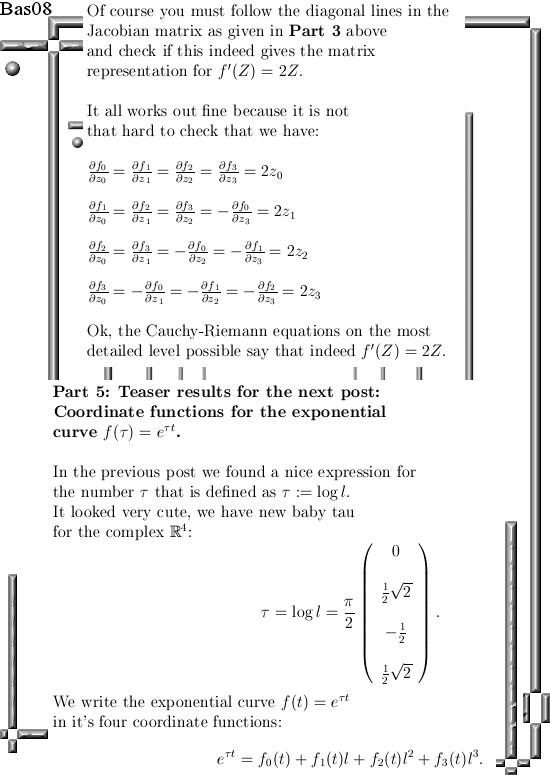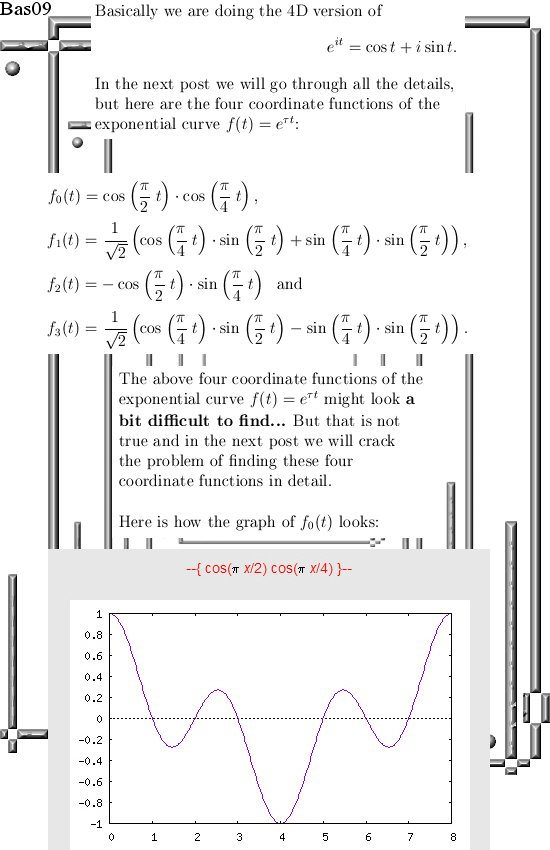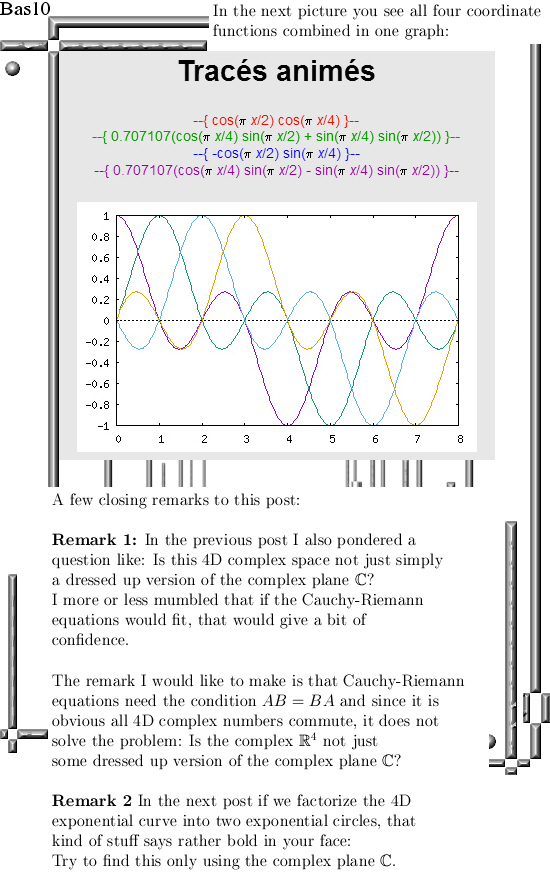Even if you change the multiplication in the plane away from the complex or split complex multiplication it is always easy to find the famous CR-equations. And if you have those in the pocket you can differentiate functions defined on the space you made ‘just like’ on the real line.
After all the CR-equations only need that the numbers commute, you also need to make sure that all basis vectors have an inverse but that are the only restrictions. As far as I know in the math world of the universities the CR-equations are only used in the complex plane, may be some stuff with multiple complex variables and that’s all there is in that part of the math universe.
Originally I wrote the post in just one go and one day later when I read it I was rewarded with a lot of stupid typo’s. Stuff like mindlessly typing x and y where it should have been a and b, also I added the inverse of the imaginary unit because after all I said it was important in the previous post where we looked at CR-equations in the case of a more general n-dimensional space.
An interesting feature of the two dimensional plane is that the two basis vectors 1 and i always commute no matter what you come up with for i^2.
I hope the reader is familiar with the fact that on the complex numbers you have the square of i being minus one and plus one for the split complex numbers. In this post we will look at a 2D multiplication that is ruled by i^2 = 1 + i, so you can view this as a minor modification of the split complex numbers.
At first I named the multiplication a ‘strange multiplication’ but one day later I realized that the age old golden ratio has the same property as my imaginary unit i. If you square the golden ratio, that is also the same as the golden ratio plus one. So I renamed it to the golden ratio multiplication. I know it is a little click baity because the golden ratio itself is not used but only the polynomial equation you need to calculate the golden ratio. Universities have their multi-million marketing budgets, still can’t find 3D complex numbers by the way and I have my free tiny click baity golden ratio multiplication. I think it is an allowed sin.
Did you know that if there is something wrong with a product, it always needs massive marketing budgets. Just look at Coca Cola, without the advertisements the stuff should gradually sell less and less because it is not a healthy product. You can say it is an unhealthy product so there is something wrong with it and as such it needs all that marketing stuff in order to survive.
This post is only four pictures long, I hope it is a bit more easy to digest because it is only two dimensions. So lets go to the math in the four pictures:
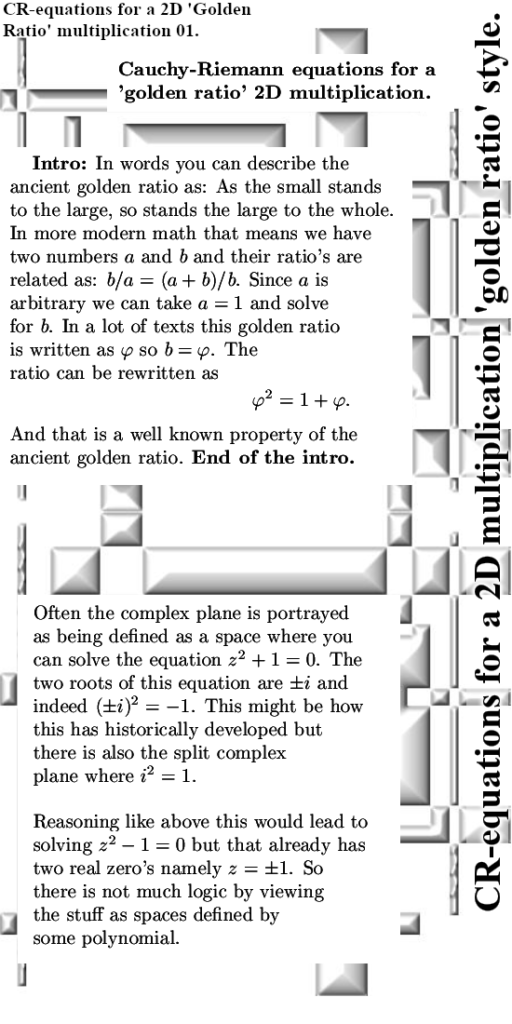
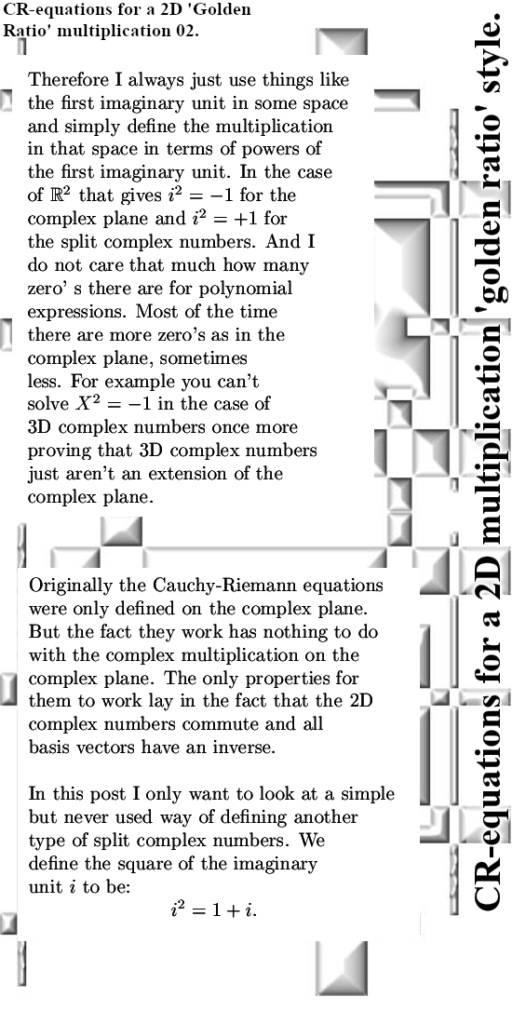
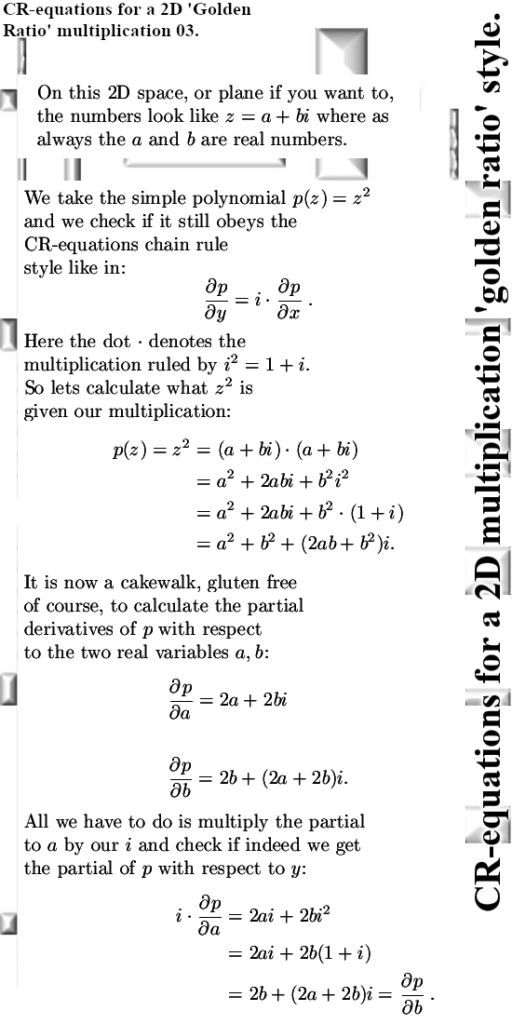
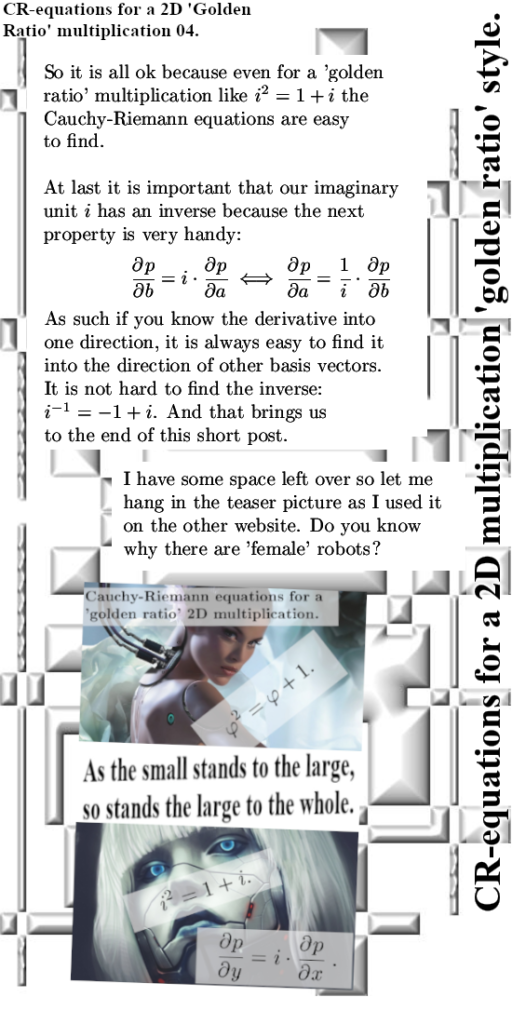
Ok, that was it for this post. Thanks for your attention.
